1973–present
Board Chairman Frederic H. Barth initially led PCOM to City Avenue; he had outlined an ambitious plan for a modern
academic medical center to include a hospital. In 1957, the College purchased 16 acres
of land and the Tudor Revival–style Moss Estate (today, Levin Administration Building)
housed on it. The estate was renovated to become an administration building situated
at the heart of the new campus.
Construction of the College campus site was phased over several years. Designed by
architects Supowitz and Demchick, the 228-bed hospital, Frederic H. Barth Pavilion,
was completed and dedicated in 1967. The facility featured a state-of-the-art surgical
center with five operating room suites; a 12-bed psychiatric unit; a clinical laboratory;
and coronary care, intensive care and cobalt units.
Construction of a six-story combined classroom, laboratory and library structure with
sophisticated equipment—Dr. Barth’s noble vision—began in 1970. The campus’s principal
building, Evans Hall (pictured above), was named for H. Walter Evans, DO, professor
of obstetrics, who organized and chaired the Department of Preventive Medicine and
guided the College’s program during the post-war years. The building was billed as
“the last word in osteopathic-medical educational facilities.”
In August 1977, PCOM acquired a five-story, 150,000-square-foot office building adjacent
to the campus, located at 4190 City Avenue. Erected by a New York City firm, the building was constructed of glass window walls
wrapped around steel-reinforced concrete support columns. It was renovated by the
College to include classrooms and lecture halls, conference rooms, research and OPP
labs, faculty offices, outpatient offices for staff physicians, a bookstore, business offices and a print shop, and a School of Allied Health.
Watch the Reel for More History

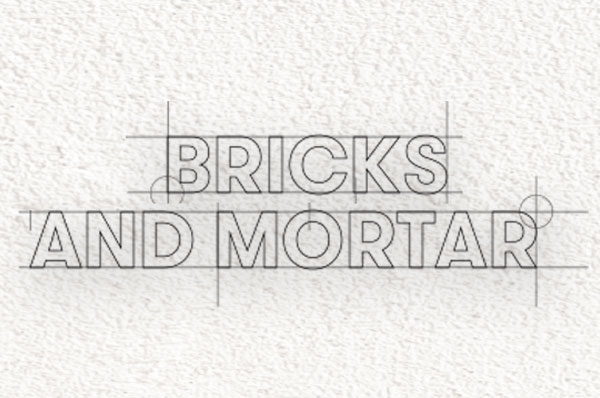 By Jennifer Schaffer Leone; illustrations by Mike Shisler
By Jennifer Schaffer Leone; illustrations by Mike Shisler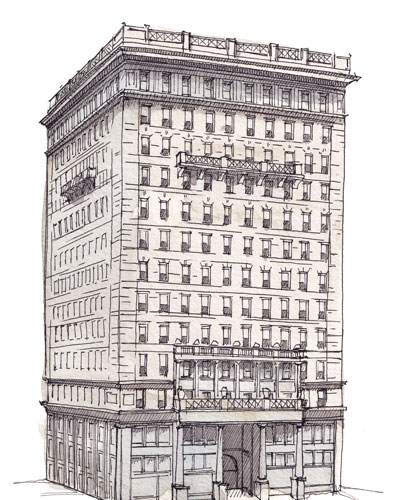 Through the vision of Mason Wiley Pressly, DO, and Oscar John Snyder, DO,
Through the vision of Mason Wiley Pressly, DO, and Oscar John Snyder, DO, 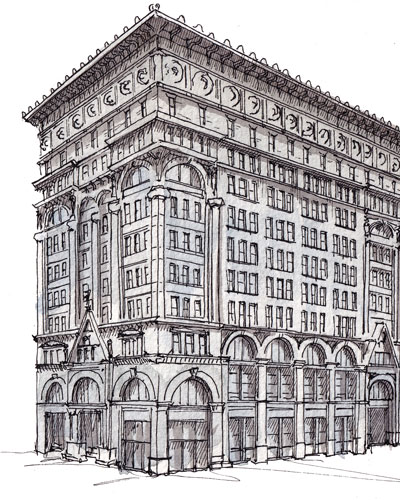 By the end of the first year, the College outgrew its space in the Stephen Girard
Building. The academic year beginning February 1, 1900, commenced in PCIO’s second
downtown location: the newly built Witherspoon Building at Juniper and Walnut Streets.
For three years, PCIO occupied the entire south side of the sixth floor with classrooms,
clinical facilities and laboratories.
By the end of the first year, the College outgrew its space in the Stephen Girard
Building. The academic year beginning February 1, 1900, commenced in PCIO’s second
downtown location: the newly built Witherspoon Building at Juniper and Walnut Streets.
For three years, PCIO occupied the entire south side of the sixth floor with classrooms,
clinical facilities and laboratories.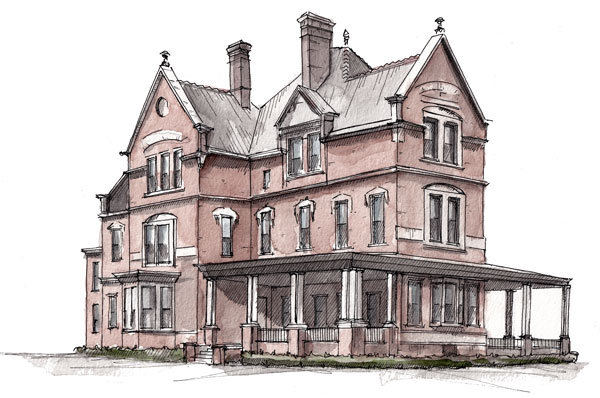 As the number of students and faculty grew, the College moved to larger quarters,
establishing a campus at 33rd and Arch Streets. Located in the suburban Powelton Village
section of West Philadelphia (across the Schuylkill River from downtown Philadelphia),
the academic building was a seven-story Victorian stone mansion with gas lighting
and a big wrap-around porch, surrounded by grassy lawns. Didactic classes were held
in the mansion’s ornate parlor; the second floor housed osteopathic treatment and
operating rooms. Anatomic dissections were consigned to the basement.
As the number of students and faculty grew, the College moved to larger quarters,
establishing a campus at 33rd and Arch Streets. Located in the suburban Powelton Village
section of West Philadelphia (across the Schuylkill River from downtown Philadelphia),
the academic building was a seven-story Victorian stone mansion with gas lighting
and a big wrap-around porch, surrounded by grassy lawns. Didactic classes were held
in the mansion’s ornate parlor; the second floor housed osteopathic treatment and
operating rooms. Anatomic dissections were consigned to the basement.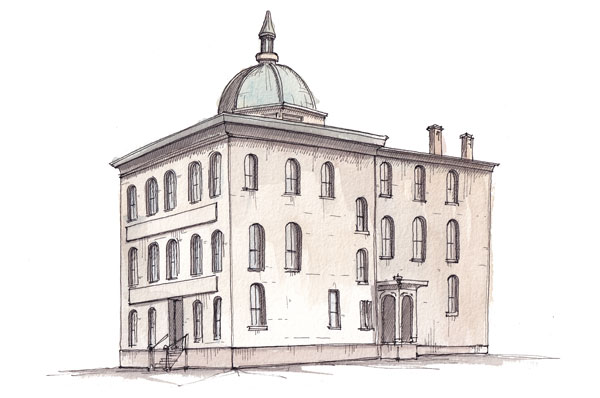 PCIO migrated to yet another site in 1908 in search of more adequate facilities for
the growing classes that were to begin a mandatory four-year, eight-month curriculum.
The College rented an Italianate brownstone building in a residential neighborhood.
The area was positioned north of the Market Street railroad viaduct and was steeped
in Gilded Age grandeur.
PCIO migrated to yet another site in 1908 in search of more adequate facilities for
the growing classes that were to begin a mandatory four-year, eight-month curriculum.
The College rented an Italianate brownstone building in a residential neighborhood.
The area was positioned north of the Market Street railroad viaduct and was steeped
in Gilded Age grandeur.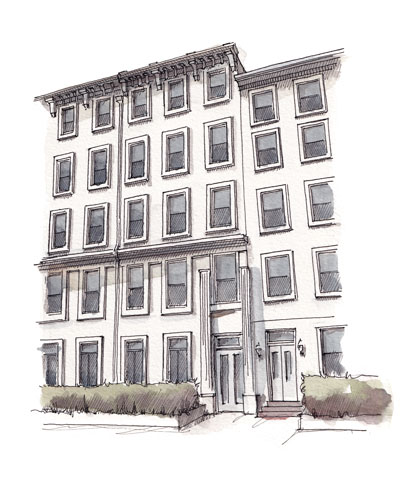 Again seeking more space, the College moved in 1912 to a five-story apartment house
in the city’s Colonial neighborhood (Society Hill). Around the corner, at 410 South
9th Street, the first osteopathic hospital to be chartered in Philadelphia was also
established. Before and after the turn of the century, several other medical institutions
were nearby: Pennsylvania Hospital, the Pennsylvania Dental College and the Pennsylvania
Institute for the Deaf and Dumb.
Again seeking more space, the College moved in 1912 to a five-story apartment house
in the city’s Colonial neighborhood (Society Hill). Around the corner, at 410 South
9th Street, the first osteopathic hospital to be chartered in Philadelphia was also
established. Before and after the turn of the century, several other medical institutions
were nearby: Pennsylvania Hospital, the Pennsylvania Dental College and the Pennsylvania
Institute for the Deaf and Dumb.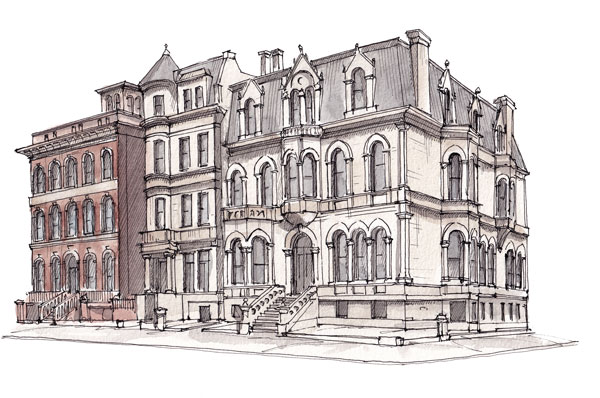 Shortly before the United States entered World War I, PCIO moved into new quarters
in Philadelphia’s Fairmount section. A $60,000 fundraising campaign enabled the College
to purchase its first buildings, including a hospital. The Reyburn Mansion, located
at 19th and Spring Garden Streets, became the cornerstone of the campus. The home
had belonged to John Edgar Reyburn, mayor of Philadelphia. With the design services
of Philadelphia architects DeArmond, Ashmead & Bickley, the brick and terra-cotta
mansion was transformed into classrooms and laboratories.
Shortly before the United States entered World War I, PCIO moved into new quarters
in Philadelphia’s Fairmount section. A $60,000 fundraising campaign enabled the College
to purchase its first buildings, including a hospital. The Reyburn Mansion, located
at 19th and Spring Garden Streets, became the cornerstone of the campus. The home
had belonged to John Edgar Reyburn, mayor of Philadelphia. With the design services
of Philadelphia architects DeArmond, Ashmead & Bickley, the brick and terra-cotta
mansion was transformed into classrooms and laboratories.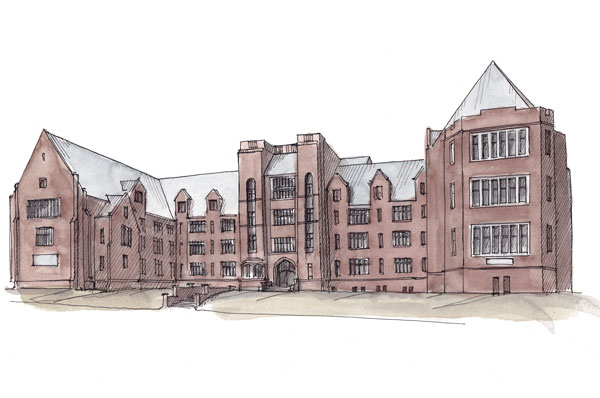 In 1927, the 19th and Spring Garden Street buildings were placed on the market, and
a search began for a new location that could accommodate the need for enlarged educational
and hospital facilities. A public fundraising campaign was launched; various sites
in North Philadelphia were explored by the Board before selecting a residential neighborhood
in West Philadelphia known as “Garden Court.”
In 1927, the 19th and Spring Garden Street buildings were placed on the market, and
a search began for a new location that could accommodate the need for enlarged educational
and hospital facilities. A public fundraising campaign was launched; various sites
in North Philadelphia were explored by the Board before selecting a residential neighborhood
in West Philadelphia known as “Garden Court.”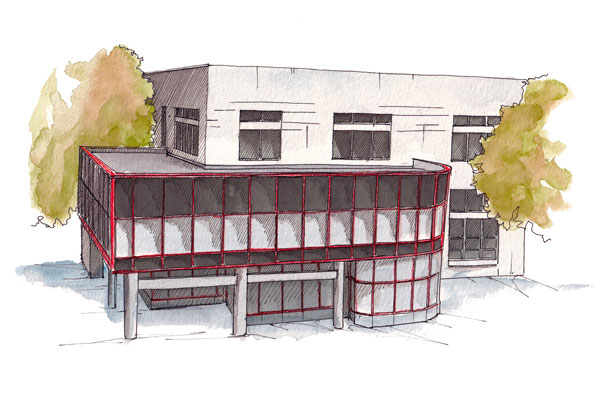 Board Chairman
Board Chairman 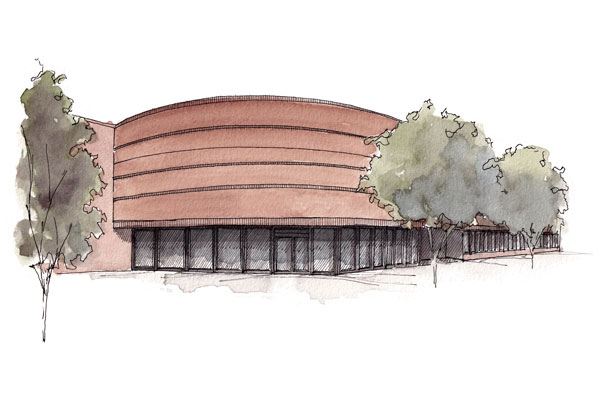 PCOM’s reach into the South officially ensued in 2004; an assessment of growing health
disparities in the southern United States substantiated an infrastructure for support
of new osteopathic and healthcare education programs.
PCOM’s reach into the South officially ensued in 2004; an assessment of growing health
disparities in the southern United States substantiated an infrastructure for support
of new osteopathic and healthcare education programs.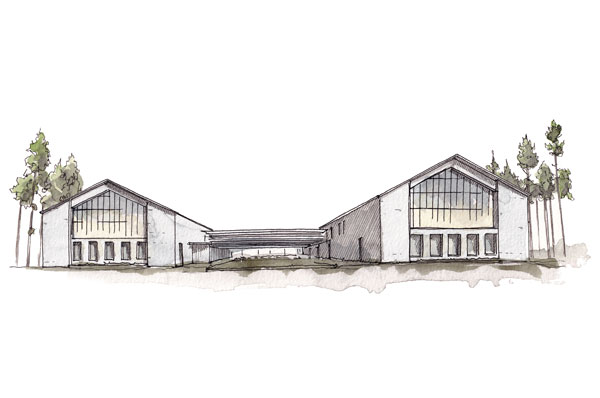 The establishment of
The establishment of 